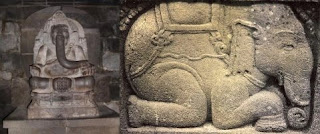Travel Guide|Travel Destination|Indonesia Vacation|Hotel In Indonesia|Bali Vacation|Indonesia Traveling|Jakarta Hotel|Jakarta Indonesia|Yogjakarta|Bandung|Pleasurable Vacation

Date of the Post
Bali, Indonesia Most Popular and Affordable Vacation Destination
The word paradise is used a lot in Bali, and not without reason. The combination of friendly, hospitable people, a magnificently visual culture infused with spirituality and (not least) spectacular beaches with great surfing and diving have made Bali Indonesia's unparalleled number one tourist attraction...
Continue Reading...
Wednesday, January 14, 2009
Prambanan, The Largest Hindu Temple in Central Java
Prambanan is located in the village of Bokoharjo, Sub District of Prambanan, Regency of Sleman approximately 18 km east of Yogyakarta. Prambanan is the masterpiece of Hindu culture of the tenth century. The temple complex can be said to be the highest level of ancient architecture in the world. The temple is extraordinarily beautiful building constructed in the tenth century during the reigns of two kings namely Rakai Pikatan and Rakai Balitung. Soaring up to 47 meters (5 meters higher than Borobudur temple), the foundation of this temple has fulfilled the desire of the founder to show Hindu triumph in Java Island. This temple is located 17 kilometers from the city center, among an area that now functions as beautiful park.
It was built around 850 CE by either Rakai Pikatan, king of the second Mataram dynasty, or Balitung Maha Sambu, during the Sanjaya Dynasty. Not long after its construction, the temple was abandoned and began to deteriorate. Reconstruction of the compound began in 1918. The main building was completed in around 1953. Much of the original stonework has been stolen and reused at remote construction sites. A temple will only be rebuilt if at least 75% of the original stones are available, and therefore only the foundation walls of most of the smaller shrines are now visible and with no plans for their reconstruction.
Prambanan temple has three main temples in the primary yard, namely Vishnu, Brahma, and Shiva temples. Those three temples are symbols of Trimurti in Hindu belief.
There is a legend that Javanese people always tell about this temple. As the story tells, there was a man named Bandung Bondowoso who loved Roro Jonggrang. To refuse his love, Jonggrang asked Bondowoso to make her a temple with 1,000 statues only in one-night time. The request was nearly fulfilled when Jonggrang asked the villagers to pound rice and to set a fire in order to look like morning had broken. Feeling to be cheated, Bondowoso who only completed 999 statues cursed Jonggrang to be the thousandth statue.
Prambanan also has panels of relief describing the story of Ramayana. Experts say that the relief is similar to the story of Ramayana that is told orally from generation to generation. Another interesting relief is Kalpataru tree that - in Hindu - the tree is considered tree of life, eternity and environment harmony. In Prambanan, relief of Kalpataru tree is described as flanking a lion. The presence of this tree makes experts consider that Javanese society in the ninth century had wisdom to manage its environment.
Just like Garuda, Kalpataru tree is also used for various purposes. In Indonesia, Kalpataru is used as the logo of Indonesian Environment Institution. Some intellectuals in Bali even develop "Tri Hita Karana" concept for environment conservation by seeing Kalpataru relief in this temple. This tree of life is also seen in the gunungan (the puppet used as an opening of traditional puppet show or wayang kulit). This proves that relief panels in Prambanan have been widely known throughout the world.
If you see the relief in detail, you will see many birds on them; they are real birds as we can see on the earth right now. Relief panels of such birds are so natural that biologists can identify their genus. One of them is the relief of the Yellow-Crest Parrot (Cacatua sulphurea) that cites unanswered question. The reason is that the bird only exists in Masakambing Island, an island in the middle of Java Sea. Then, did the bird exist in Yogyakarta? No body has succeeded in revealing the mystery.

The ganesha statue, at Prambanan, Central Java, Indonesia

The Reliefs, at Prambanan temple, Central Java, Indonesia
Labels:
Interesting Places,
Yogyakarta
Subscribe to:
Post Comments (Atom)

2 comments:
Marvelous pictures. To my european eyes all the pictures are very exciting images of an intersting unknown world....
What extraordinary architecture and fascinating history.
Post a Comment